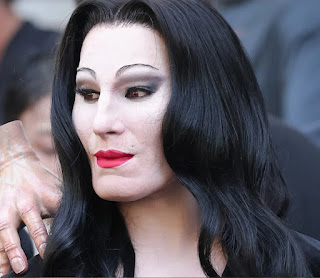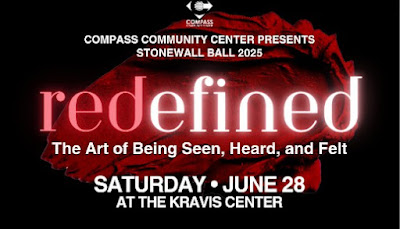According to Miranda: The rules to follow if YOUR man wants to try this at home. If you feel ready to dip your toe in to this snowballing trend then here are some easy tips to get you started:
 |
Harry Styles (pictured in April 2022)
is known for his fur coats, pearl necklaces
and stylish blouses |
My Note: I especially like #6
1. Start small
'If the nearest you have previously come to gender-fluid dressing is dressing up as an ugly sister in the local pantomime, my advice is to take it slowly and start small.
'The sartorial world for gents is by contrast extremely limited, with far fewer options when it comes to colour, silhouettes, accessories… everything.
'Take some time to feel your way into what feels right for you, this is a very personal process and not only do you need to discover what looks good on you and reflects your personality but also where your own sartorial limits are.
'With this in mind, look to accessories as an easy launchpad for your new contemporary style. A simple silk scarf knotted at the neck is a great starting point, as would be some more feminine jewellery (e.g. tapping into the current pearls trend which is huge) or perhaps a bit of metrosexual makeup.
'It might be my 80’s childhood, but I always think a little artfully applied guyliner and a bit of concealer can work wonders. Don’t be afraid to ask your female friends for a bit of assistance, finding a good match can be tricky, as can the blending - we are here to help where needed.'
2. Make simple swaps
'Break your normal outfit down into its component parts and decipher which items could be swapped out for something a little more feminine.
'Could your straight leg jeans be swapped out for a skinny legged seventies inspired flare for example? Could you switch up your pinstripe button down for a silk pussybow blouse?
'Focussing on single elements of your look and taking time to get used to how they look and feel will make this aesthetic far more achievable and less overwhelming.
3. Get inspired
'Make like a stylist and do your research before you get started. The options are innumerable and it's easy to get disheartened when there are just so many choices.
'There will be a lot of trial and error, so start keeping a record of looks you like on platforms like Pinterest, Instagram, or in a special album on your phone.
'Every time you see a look you like, analyse it and break down what you could incorporate into your own wardrobe, pay particular attention to people who have a similar build and height to you - as it’s more likely that this will work.
4. Experiment
'This is where the fun really begins. There are so many stylish delights awaiting you! The fashion world is literally your oyster.
'The key? Remaining completely open-minded, you are in totally new territory here and it’s time to redefine what does and doesn’t suit you with a whole new set of rules - or quite possibly no rules at all!
'There are so many aspects to consider… the world of fabric has just opened up to you, and you can play with all sorts from lace to chiffon and beyond.
'Print and pattern might just be your new best friend, and a chance to really get creative and inject a little more personality into your wardrobe, as will be colour.
'Colour is a hugely impactful tool and is frequently missing from gentlemen's wardrobes and even many women's - now is your opportunity to embrace it.
'Gather your new potential wardrobe weapons and set aside some dedicated time at home to try it all on, experiment and see what you like.
'Any stylist will tell you that often the most fabulous outfits are born from an experimental pairing of the most unlikely pieces - this is totally going to play to your advantage, so just go for it.'
5. Balance your silhouette
'A style rule that’s worth bearing in mind is keeping your silhouette balanced, so if you are wearing something baggier on one half of your body keep the garment on the other half slim fitting.
'This can be trickier with the current oversized trend, so if you are tapping into that look, make sure you are showing a bit of skin (wrist through rolling up your sleeves, ankles or a bit of chest on display are all really useful for breaking up a ‘blocky’ look).
'An ideal feminine outfit has movement and curved lines, which you want to emulate, rather than wearing something that is straight up and down.'
6. Confidence is key
'Finally, a word from someone who has seen countless stunning models in breath-taking outfits slouched in corners, totally underselling themselves and their outfits - confidence, energy and posture is everything.
'You have to feel good and like what you’re wearing or you’re just not going to carry off your new image.
'So, take a bit of extra time to get things just right - then stand tall and enjoy having broken free from all social and sartorial limitations; I’m sure you will look absolutely fabulous - you deserve it!'
















































